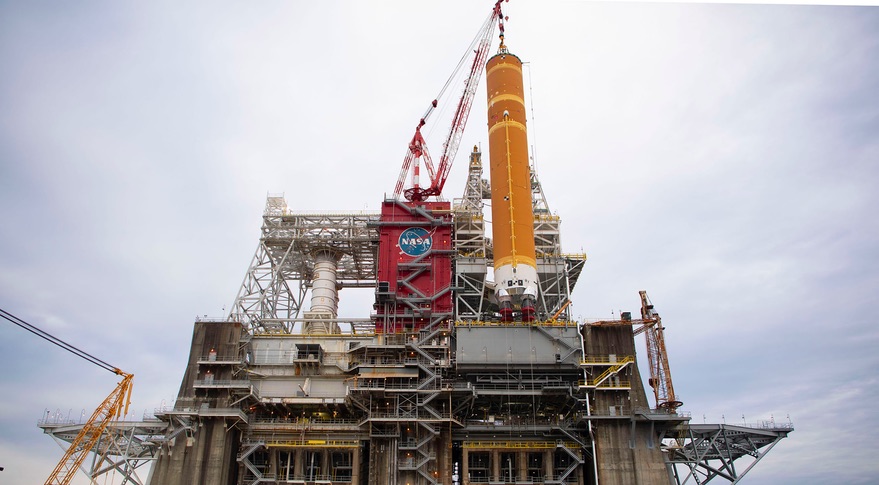Products You May Like
WASHINGTON — NASA plans to complete the Green Run test campaign for the Space Launch System core stage with a hotfire test scheduled for mid-January.
NASA announced Jan. 5 that it has scheduled the static-fire test, where the core stage’s four RS-25 engines are fired for a full-duration burn of 493 seconds, for no earlier than Jan. 17 at the Stennis Space Center in Mississippi.
NASA made the decision after evaluating data from a wet dress rehearsal test Dec. 20, where the core stage was loaded with liquid hydrogen and liquid oxygen propellants and went through a practice countdown. That countdown was supposed to go until 33 seconds before ignition, but instead stopped “a few minutes” before that, NASA said in a Dec. 21 statement.
The early end of the wet dress rehearsal, NASA said, was caused when a valve closed a fraction of a second off from its predicted time. “The team has corrected the timing and is ready to proceed with the final test of the Green Run series,” the agency stated.
The valve issue was the only major problem NASA reported with the wet dress rehearsal, the seventh in a series of tests in the overall Green Run campaign. “During our wet dress rehearsal Green Run test, the core stage, the stage controller, and the Green Run software all performed flawlessly, and there were no leaks when the tanks were fully loaded and replenished for approximately two hours,” Julie Bassler, SLS Stages manager at NASA, said in the agency statement. “Data from all the tests to date has given us the confidence to proceed with the hot fire.”
If the Jan. 17 date for the hotfire test holds, it will take place almost exactly a year after NASA installed the core stage on the B-2 test stand at Stennis. At that time, the agency hoped to complete the Green Run tests by late summer. However, a two-month shutdown of Stennis caused by the coronavirus pandemic, along with a series of passing tropical weather systems, delayed the series of tests.
Technical issues with the core stage and its test equipment also contributed to the delays. NASA first attempted the wet dress rehearsal of the core stage Dec. 7, but stopped it when liquid oxygen flowing into the stage was too warm. Agency officials said the issue was with the propellant loading process, and not a flaw with the core stage itself.
Once the Green Run test is complete, NASA will ship the core stage to the Kennedy Space Center to be integrated with the other elements of the SLS and the Orion spacecraft for the Artemis 1 mission. NASA had planned to launch Artemis 1 in late 2021, but the latest delays in the Green Run have all but eliminated the margin in the schedule for that date.
“We’re getting to a point where we’ve got very little margin left in the schedule relative to our commitment to our delivery date,” John Honeycutt, NASA SLS program manager, said Dec. 10 after the first attempt to conduct the wet dress rehearsal. “The margin that we had built into the schedule for the Green Run is getting pretty slim.”
